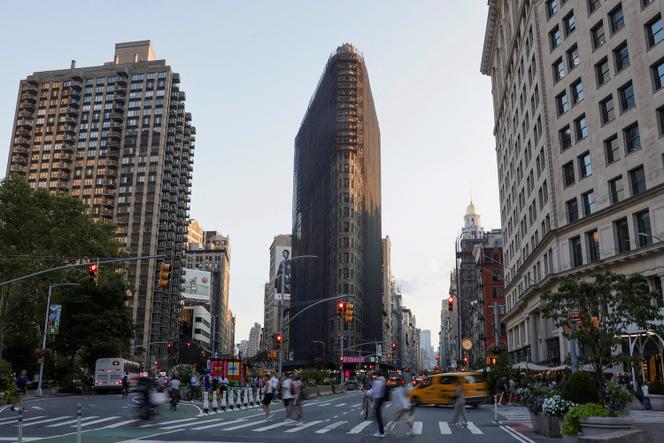


What millionaire hasn't dreamed of treating themselves to a pied-à-terre in the Flatiron Building, New York's legendary skyscraper and designated a national historic landmark? The opportunity to do so may soon arise. At the end of August, the consortium that owns the building applied to the city council for permission to convert the former office tower block into luxury apartments. The Flatiron Building, famous for its triangular appearance, was designed to optimize the space on which it was built between Fifth Avenue and Broadway on one side and 22nd and 23rd Streets on the other. To New Yorkers, it resembled an iron, and the nickname stuck. A monument to popular culture, it was featured in director Sam Raimi's Spider-Man trilogy, where it housed the offices of the Daily Bugle, the tabloid where the movie's superhero Peter Parker works.
Designed by architect Daniel Burnham, the 22-story building rises to a height of 87 meters, and its façade's rounded edges are ornamented in the Beaux-Arts style. The first three floors are clad in limestone, the rest in glazed terracotta. It was built in just over a year, to house the headquarters of the Fuller Company, a Chicago construction firm, which gave it its first name, the Fuller Building. When it was inaugurated in 1902, it was one of the tallest buildings in the Big Apple and one of the first to feature a steel frame for greater wind resistance. Although subject to mockery, it soon became a fixture in America's economic and cultural capital and the surrounding neighborhood – one of the most expensive in Manhattan – became known as the Flatiron District.
It is one of New York's most photographed buildings, but much to the disappointment of tourists visiting the icon, it has been hidden behind scaffolding for years. Its long-term tenants Macmillan Publishers had occupied most of the building, but after their departure in 2019, it has remained largely empty. In 2023, the former owners' inability to agree on a renovation project brought them before a court, which ordered its sale by auction. The deal fell through after Jacob Garlick, an unknown bidder took the pot for $190 million (€175 million) but failed to make the down payment. A second auction was won for $161.5 million by a group headed by Jeff Gural, a former Flatiron majority shareholder and New York real estate magnate.
Sixty luxury apartments are planned, not to mention a gym, swimming pool, lounges, a library and multimedia recreation room. In order to obtain the green light from the municipal authorities, the owners haven't hesitated to play the dearth of housing card, touting the conversion of existing buildings as a sustainable way to help alleviate the city's current housing crisis. The megalopolis is experiencing an unprecedented housing shortage and its democratic mayor Eric Adams has made the conversion of floundering office buildings – of which there are many, due to the Covid-19 pandemic – into residential properties a major element of his strategy, but so far with meager results. If the planned modifications of the Flatiron Building are accepted, the new apartments are envisioned for 2026.
